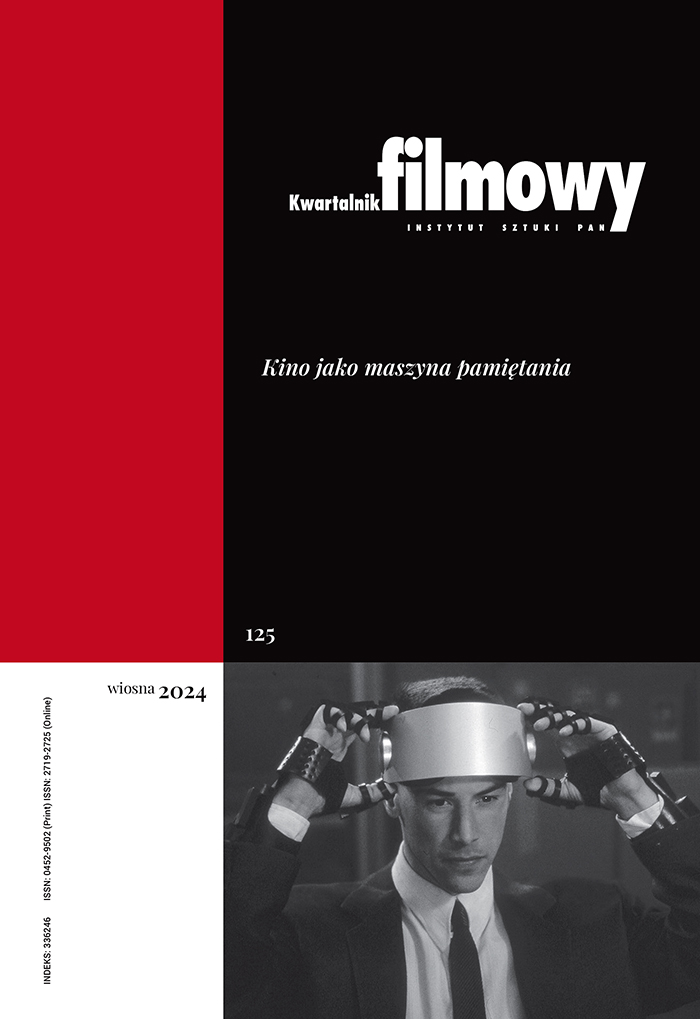The Story of a Certain Illusion: Theories of Kitsch and Krzysztof Kieślowski's “Double Life of Veronique”
Abstract
In the first part of the article the author presents three theories of kitsch: Hermann Broch's, Abraham Moles' and Milan Kundera’s . This overview creates a theoretical basis for the analysis of Krzysztof Kieślowski’s Double Life of Veronique, which forms the body of the second part of the article. In the analysis Morstin-Popławska focuses on exaltation, the primacy of the aesthetic, on the so called religion of beauty and aesthetical lie. In the conclusion the author argues that the analysis of the film allowed her to identify terms that belong to the dictionary of kitsch of the highest order. At the same time she maintains that the kitsch one is dealing with is not dangerous, as we are able to easily identify and formulate an insightful critique of the phenomenon. This means that our awareness of kitsch is higher than it was in the first half of the 20th century. Nowadays kitsch is no longer lived through. Rather it is used in different styles and art forms that offer both cheap thrills or exalted aesthetic experience such as in the case of Kieslowski's film.
Keywords:
Krzysztof Kieślowski, kitsch, exaltationReferences
Broch Hermann, Kilka uwag o kiczu i inne eseje, tłum. D. Borkowska, J. Garewicz, R. Turczyn, Czytelnik, Warszawa 1998, s. 46, 105, 109, 116.
Google Scholar
Kieślowski Krzysztof, O sobie, Znak, Kraków 1997, s. 144.
Google Scholar
Kundera Milan, Nieznośna lekkość bytu, tłum. A. Holland, PIW, Warszawa 1996, s. 187.
Google Scholar
Kundera Milan, Sztuka powieści, tłum. M. Bieńczyk, Czytelnik, Warszawa 1998, s. 24, 142.
Google Scholar
Lacroix Michel, Ideologia New Age, tłum. M. Gałuszka, Książnica, Katowice 1999, s. 34-35, 42.
Google Scholar
Martuszewska Anna, Wniebowzięcie heroiny, w: taż, Ta trzecia. Problemy literatury popularnej, Wydawnictwo Uniwersytetu Gdańskiego, Gdańsk 1997, s. 72.
Google Scholar
Moles Abraham, Kicz, czyli sztuka szczęścia. Studium o psychologii kiczu, tłum. A. Szczepańska, E. Wendel, PIW, Warszawa 1978, s. 218.
Google Scholar
Poprzęcka Maria, Złoty wiek złej sztuki, w: tejże, O złej sztuce, Wydawnictwa Artystyczne i Filmowe, Warszawa 1998, s. 161-205, 244-245.
Google Scholar
Sobolewska Anna, Mapy duchowe współczesności: co nam zostało z Nowej Ery?, Wydawnictwo W.A.B., Warszawa 2009.
Google Scholar
Ugrešić Dubravka, Słodkie strategie, w: tejże, Kultura kłamstwa (eseje antypolityczne), tłum. D. J. Ćirlić, Wydawnictwo Dolnośląskie, Wrocław 1998, s. 67-126
Google Scholar
Authors
Agnieszka Morstin-Popławskakwartalnik.filmowy@ispan.pl
Jagiellonian University Poland
Adiunkt w Instytucie Sztuk Audiowizualnych UJ. Współredagowała tom Ciało i seksualność w kinie polskim (2009).
Statistics
Abstract views: 265PDF downloads: 146
License
Copyright (c) 2009 Agnieszka Morstin-Popławska

This work is licensed under a Creative Commons Attribution 4.0 International License.
The author grants the publisher a royalty-free non-exclusive licence (CC BY 4.0) to use the article in Kwartalnik Filmowy, retains full copyright, and agrees to identify the work as first having been published in Kwartalnik Filmowy should it be published or used again (download licence agreement). The journal is published under the CC BY 4.0 licence. By submitting an article, the author agrees to make it available under this licence.
In issues from 105-106 (2019) to 119 (2022) all articles were published under the CC BY-NC-ND 4.0 licence. During this period the authors granted a royalty-free non-exclusive licence (CC BY-ND 4.0) to use their article in „Kwartalnik Filmowy”, retained full copyright, and agreed to identify the work as first having been published in our journal should it be published or used again.
Most read articles by the same author(s)
- Agnieszka Morstin-Popławska, Weeping Over a Picture: Religious Kitsch in Jerzy Łukaszewicz’s Film “Faustine” , Kwartalnik Filmowy: No. 45 (2004): Sacrum in Film
- Agnieszka Morstin-Popławska, “Coniunctio Oppositorum”: On the Goal of Journey Into the Depth of “The Third Part of the Night” , Kwartalnik Filmowy: No. 57-58 (2007): Polish Cinema, Cinema of Neighbours
Similar Articles
- Agnieszka Morstin, The Story of a Certain Illusion: Theories of Kitsch and “The Double Life of Veronique” by Krzysztof Kieślowski , Kwartalnik Filmowy: No. Special Issue (2013): Polish Film Scholars on Polish Cinema
You may also start an advanced similarity search for this article.











